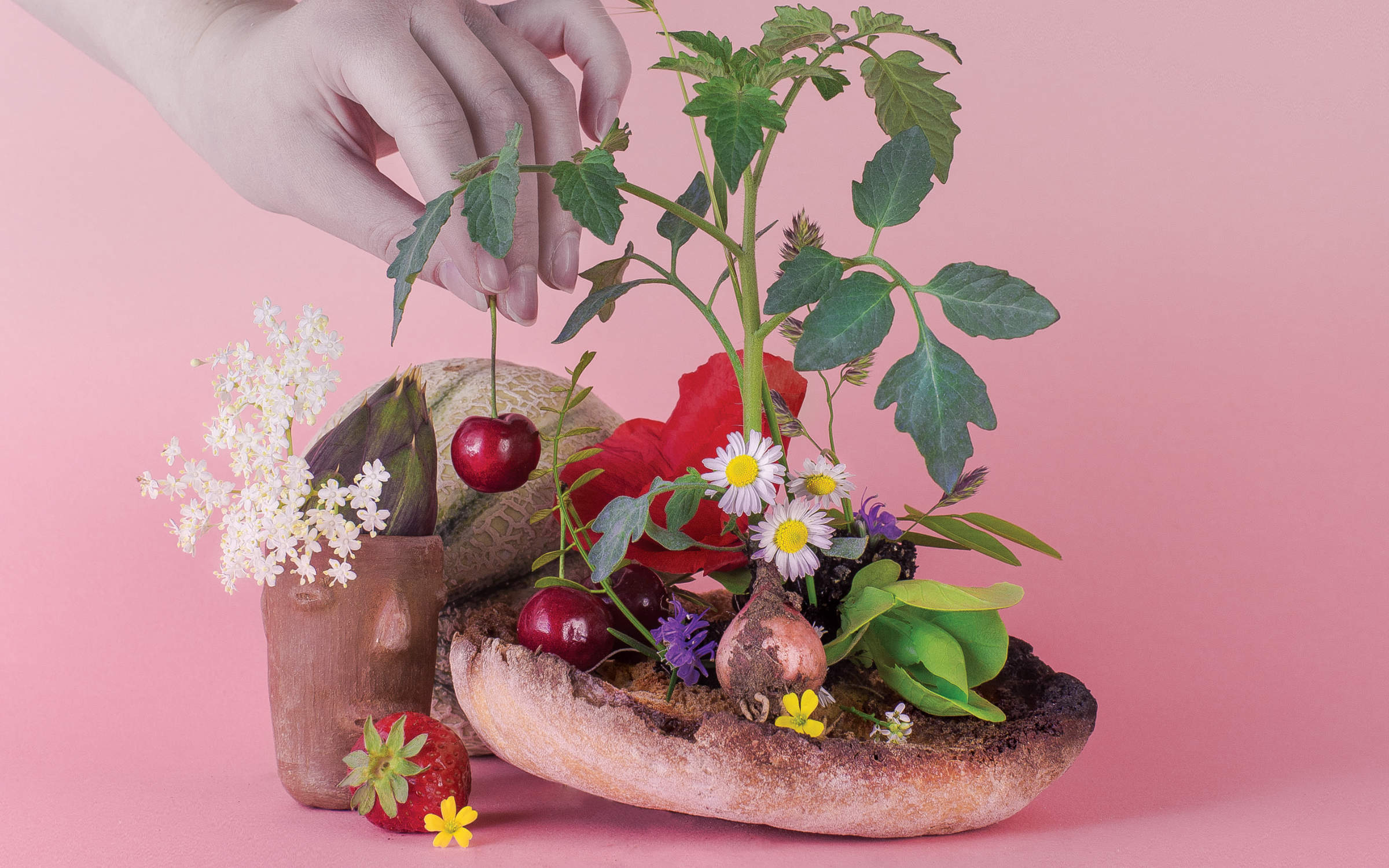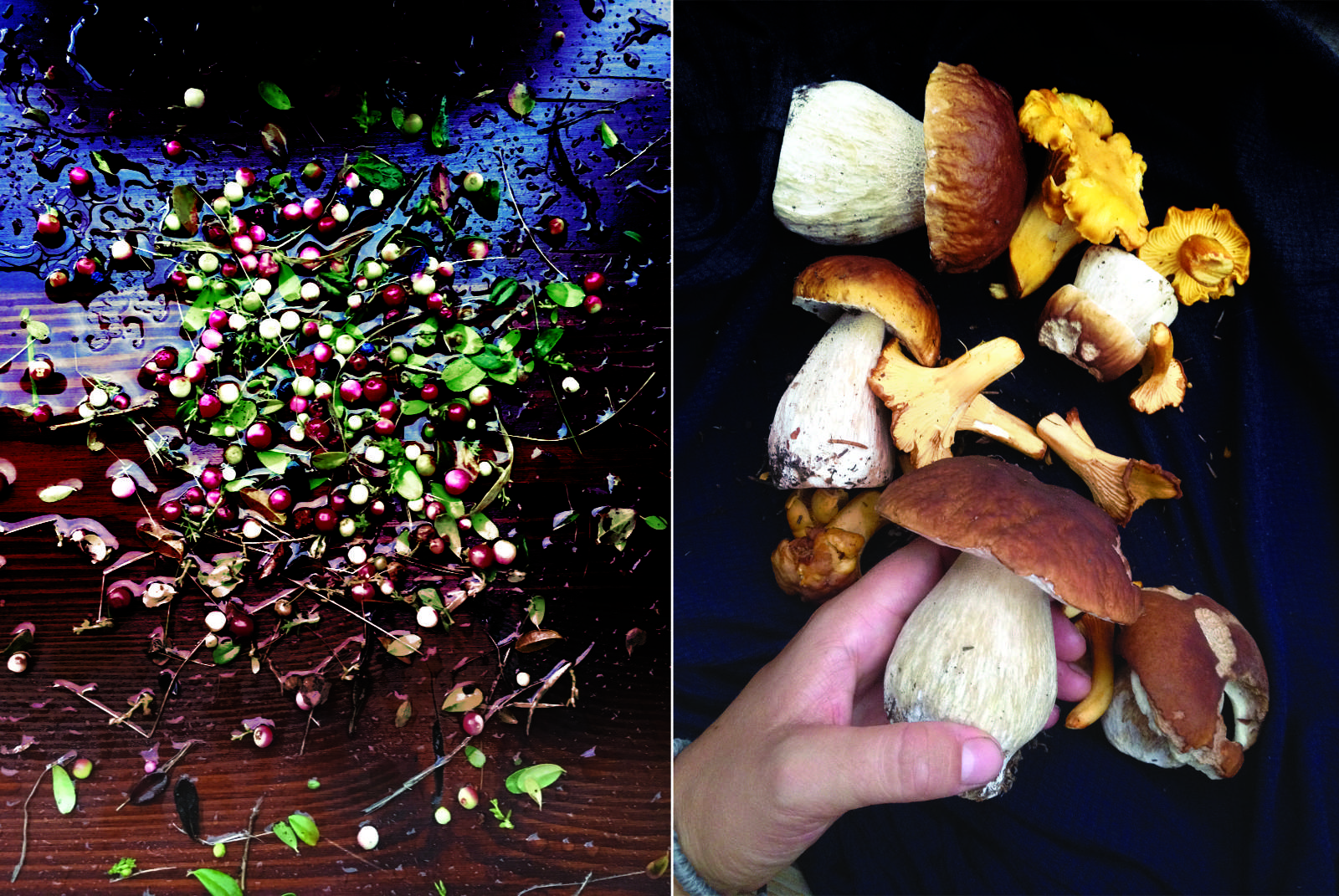The New Gastronome
A Tale of Bears & Garlic
by Elisabeth Berlinghof
by Elisabeth Berlinghof

Once upon a time, when I was sitting next to Ariane on our spot right by the window, I noticed the power of spring’s first sun rays. I hadn’t even realized just how hungry I had been for this light, this warmth, this energy. They had been long forgotten in the continuous grey of German winter. Living in a city, constantly distracted by my to-do list and the next deadline, I finally took a moment to look up and realized the world around me had greened. When had I been to the forest last? I couldn’t say.
It all started with a free afternoon when Ariane and I were still in elementary school. Spring life was screaming into our faces louder than ever. Things were sprouting, new beginnings could be found everywhere and the strong sun of spring was crawling lazily over the juicy tones of green around us. We sneaked into the woods in the city centre of Munich. Ariane and I would stop speaking, hearing each other by the cracking and crinkling of branches and leaves alone, indulging completely in the act of scanning the ground. As silently as possible we filled our bags with elegant silky leaves, so as not to wake up the bears to whom the wild garlic – Allium ursinum or bear’s garlic – belonged. They were known to be greedy creatures and had put a similar, but highly toxic, plant in between the delicious garlic. At this time of the year, both covered the ground like carpet, waiting in bouquets to be pulled out with a slight popping sound. For anyone else, this situation could have been dangerous, but for us, it was easy to distinguish the wild garlic from its dangerous brother (Lily of the valley or Convallaria majalis), as our parents had taught us the trick: when rubbing the leaves a strong garlic smell would appear, as if by magic.
In our boredom, we built a little stand on one of Munich’s busiest streets and sold them. Of course, we didn’t tell our customers how abundantly the wild garlic was growing in the deep forest park a street away. Instead, we wrote little notes recommending it in cream soups on potato base, mixed into fresh cheese, made into a pesto, as an ingredient in any stuffing (from Raviolo to Pierogi) or in anything else you could imagine benefitting from some garlicky goodness.
Years later, Ariane and I were old enough to fully face the wild animals of Bavaria during summertime. We took a train out of the city and walked, walked, walked for hours. I remember the mode I used to enter when collecting things, an animalistic side coming to the surface, which made me forget everything around me. It was a complete focus of the eyes, looking for a key pattern, a shape, the specific colour of the plant I was looking for. The mere excitement of spotting magic in the form of that bright yellow shine that could have been a chanterelle or a yellow leaf and then, yes, really turned out to be a perfectly silky egg-yellow chanterelle. Here the real mania began: more, more, MORE.

In the same warm, late summer evening, we sat down for a meal from the collected mushrooms. I seared some juicy tomatoes with salt in a pan, remove them when burnt and cooked the chanterelle in their remaining red juice, adding a bit of oil and soy sauce. I also fried onions and zucchini with a little oil and salt until they had a nice colour, but were still al dente. Finally, I mixed everything in a bowl and seasoned it to taste with balsamic vinegar, soy sauce, good olive oil, salt, and pepper.
When I sat down to eat the well-earned meal, images of the forest and its patterns flashed up again, some even following me into my dreams that night.
Back from my daydream and with that same warm spring sun on my face, I just couldn’t stay seated anymore. The sunlight was too inviting, the memories too strong. I left the office and jumped on my bike to just move. While I was passing yet another city park – this one without bears, I thought grinning – I saw a big group of men bowed down between the trees. I went up to them, curious, to ask what they were collecting. It turned out we weren’t sharing a language. One of them bent down to dig out the root of my old friend, the same Allium ursinum, that so far I had only known for its leaves and flowers. In some wild gestures and coughs, he tried to explain to me (I think) that they were actually using the roots of the wild garlic to preserve it as a traditional remedy against colds. Whether I understood correctly or not, in just this one instant the anonymity of the big city was broken down for this new encounter, two people who would not even have noticed each other without the plants, forming a kind of mountain comradery!
You see, there is something to a forest that just makes me feel better. A deep sense of acceptance and calmness that comes over me. This might just be a romanticisation my big city head is painting, something that I can just perceive because it’s an exception. But it doesn’t matter, because it works: Staring into the green for long enough, I will start to just be, happily ever after.
Cover photo ©Aarón Gómez Figueroa